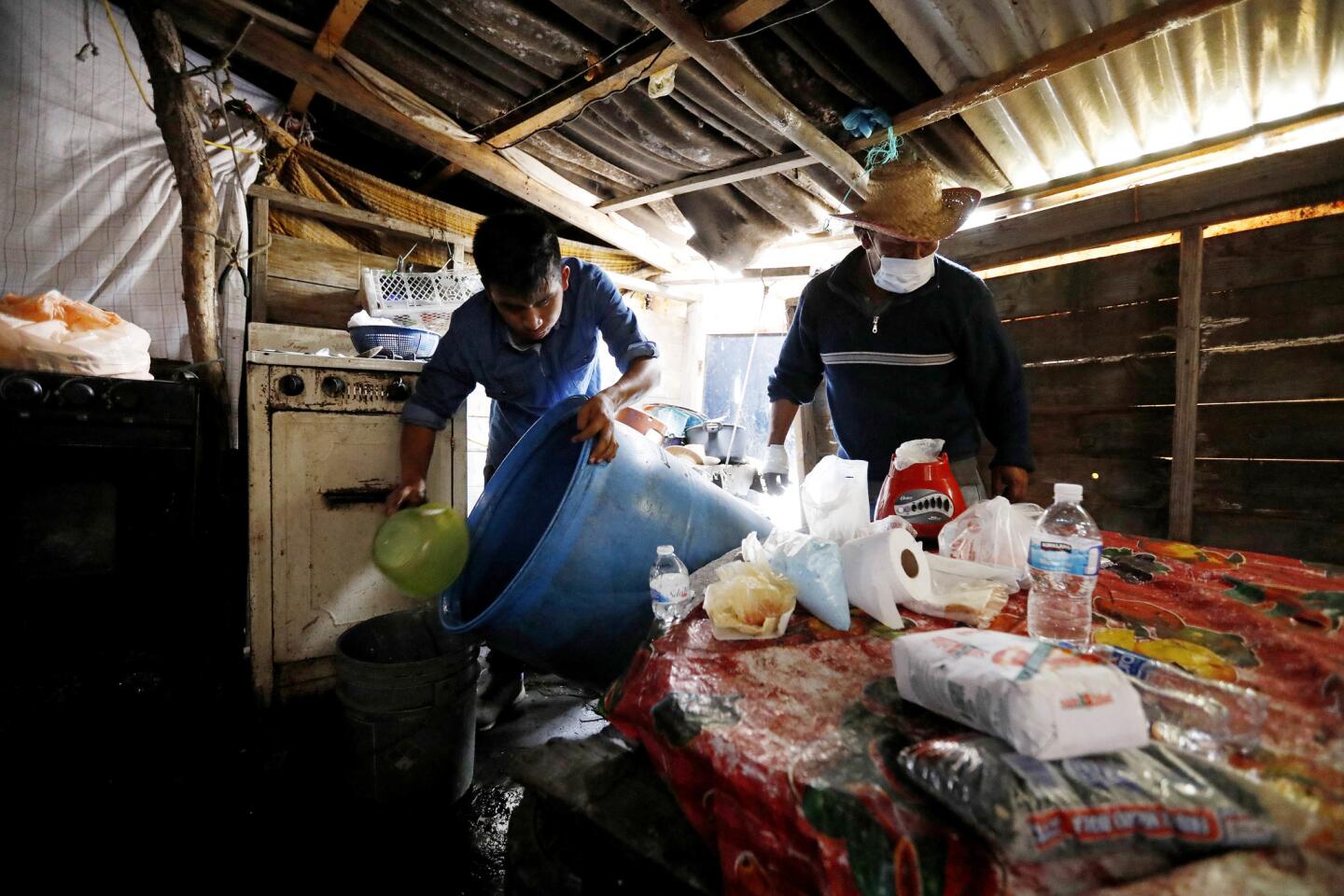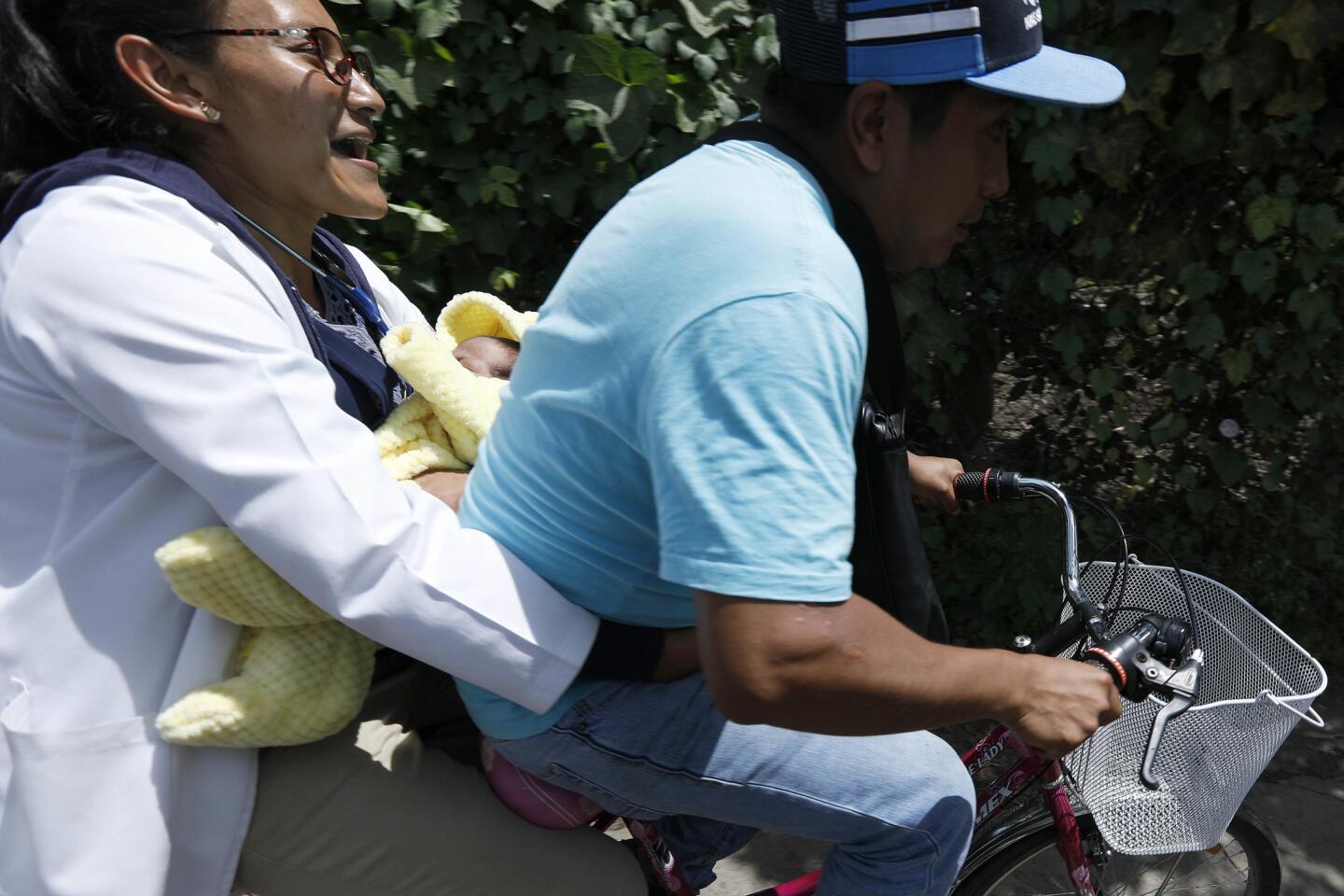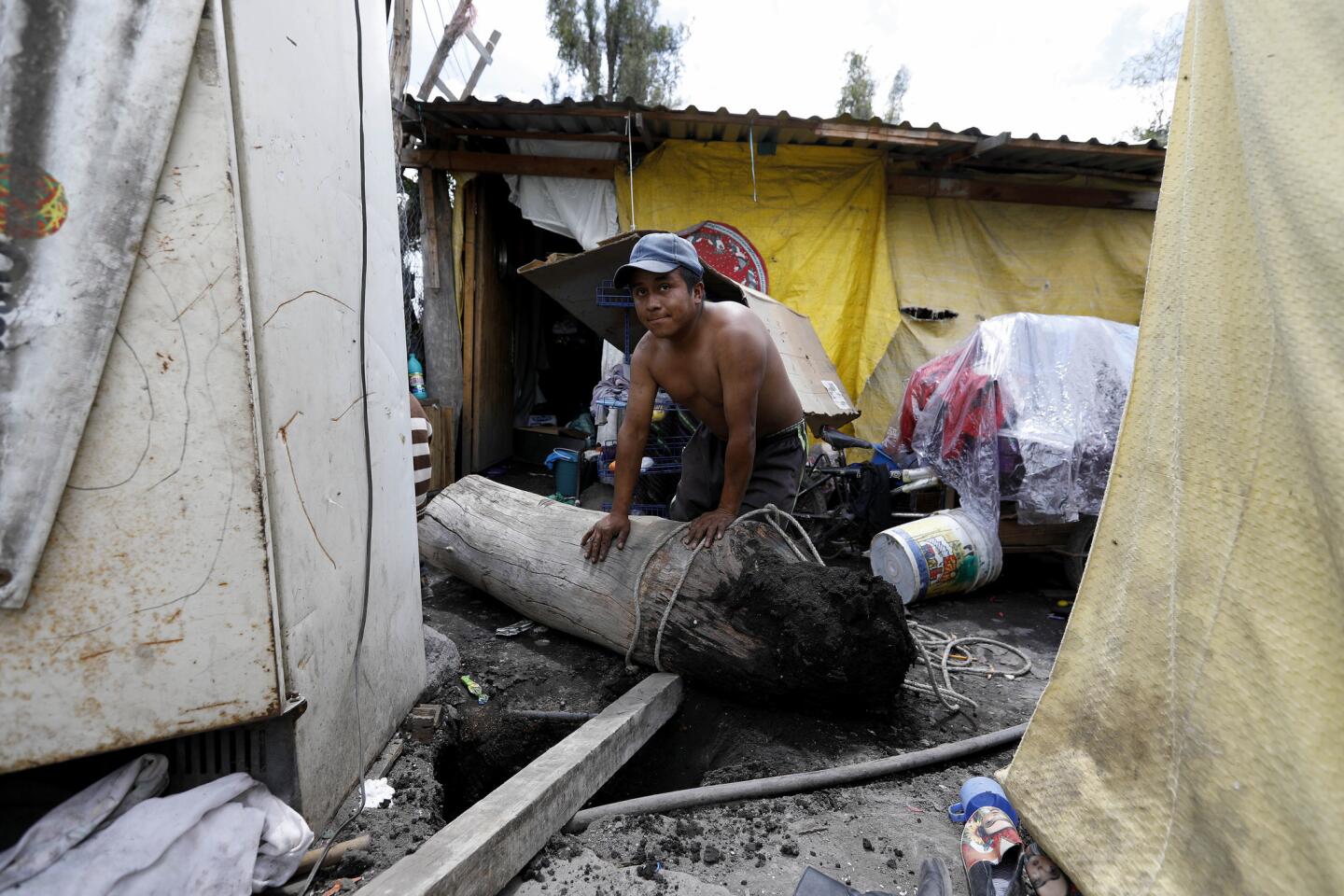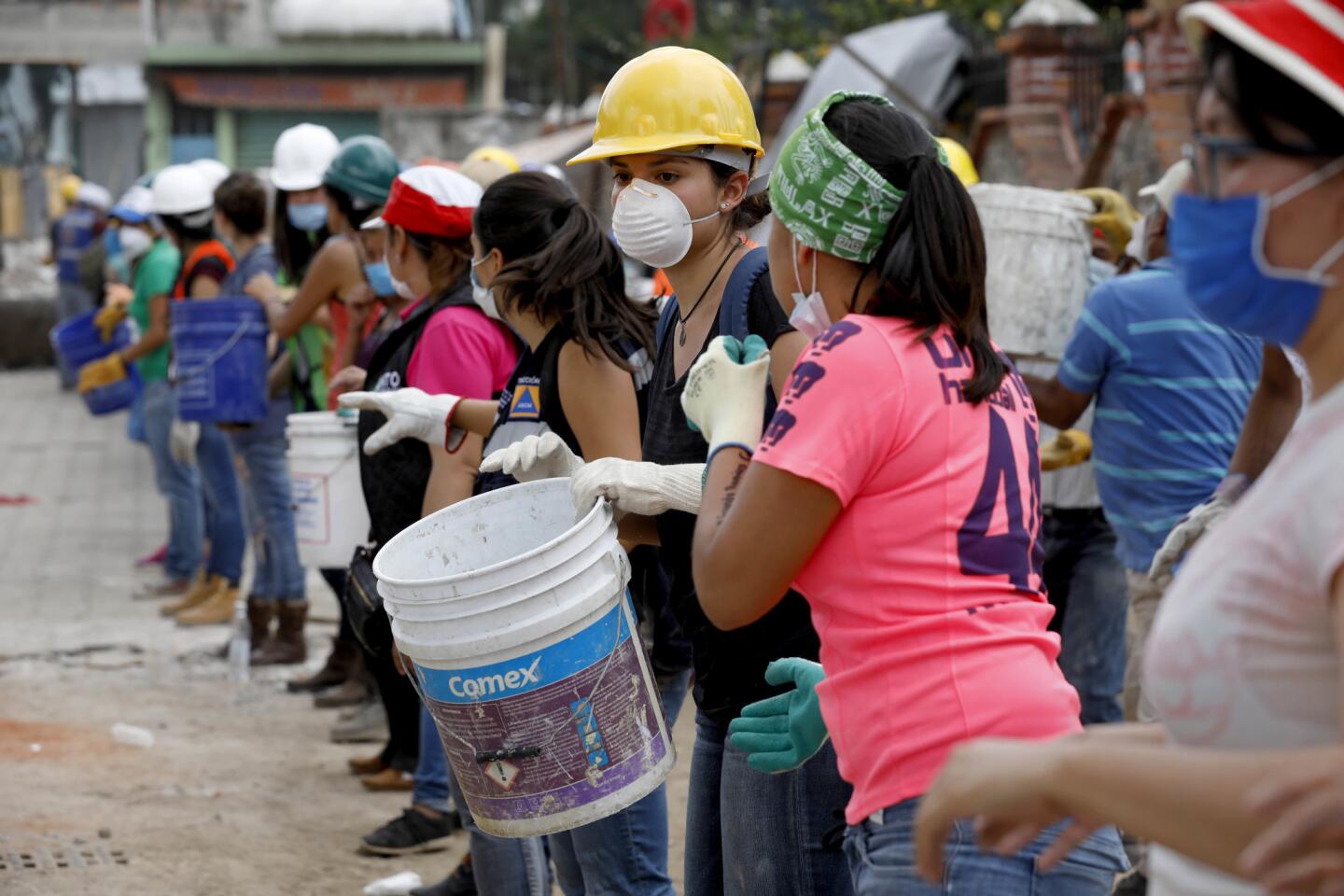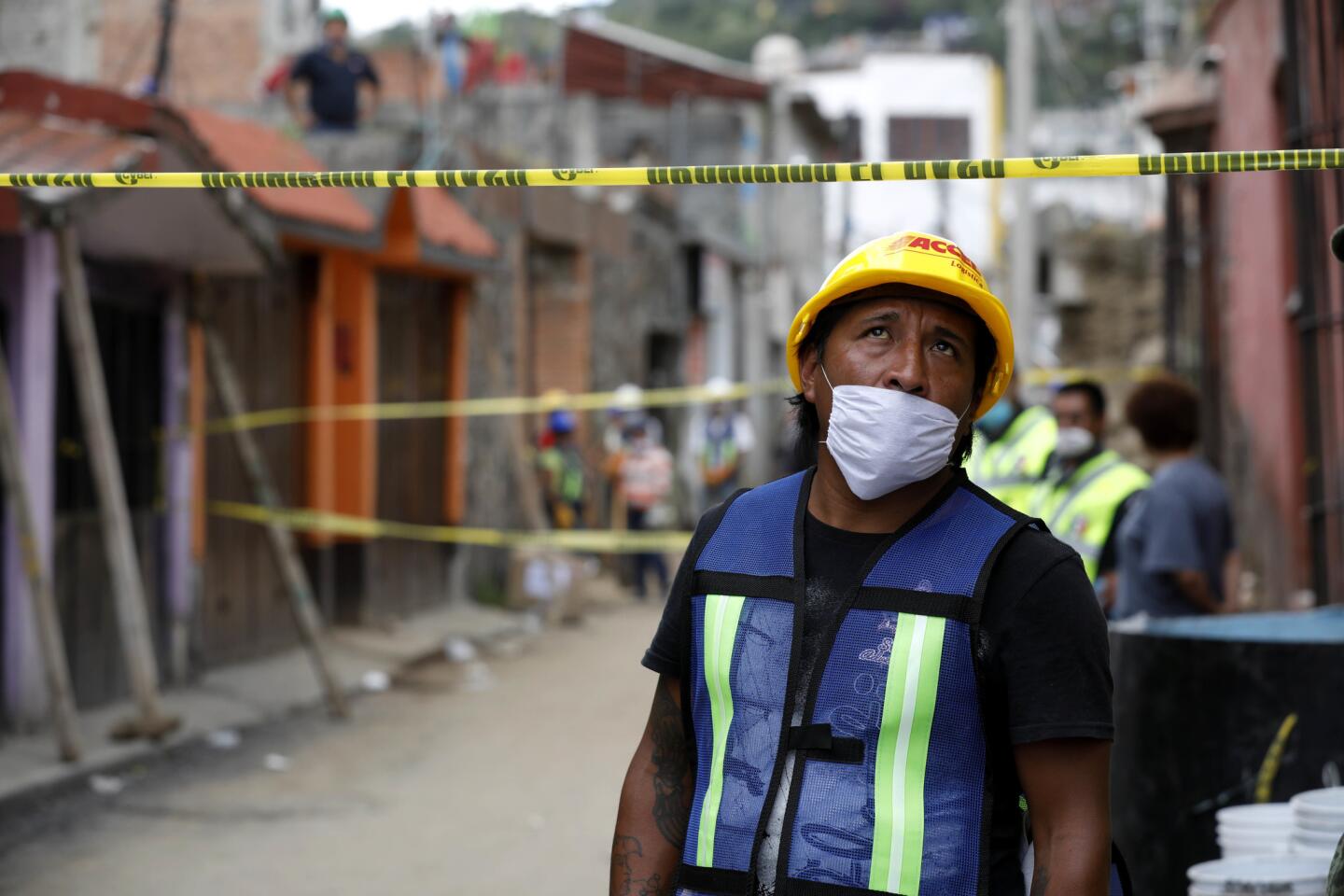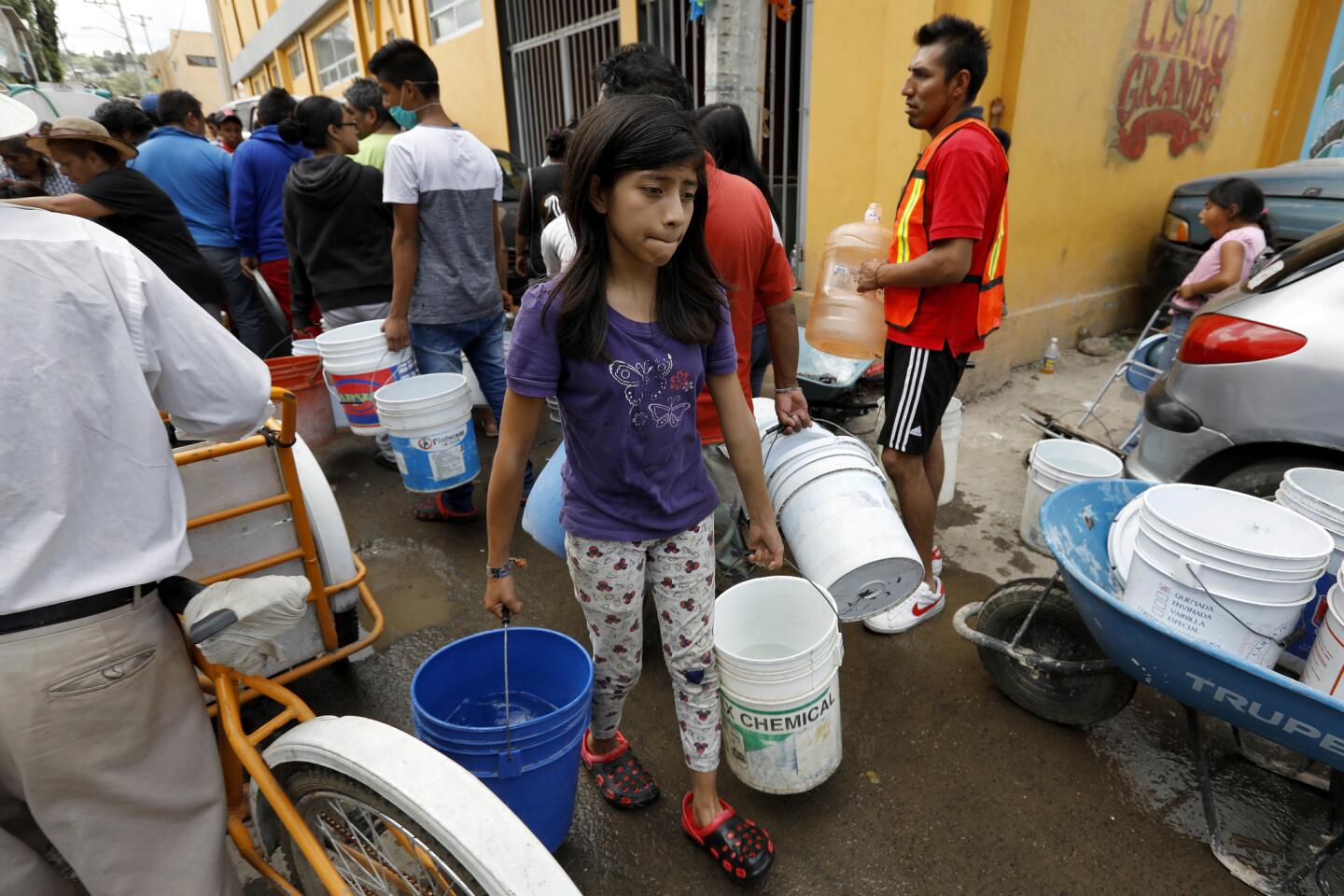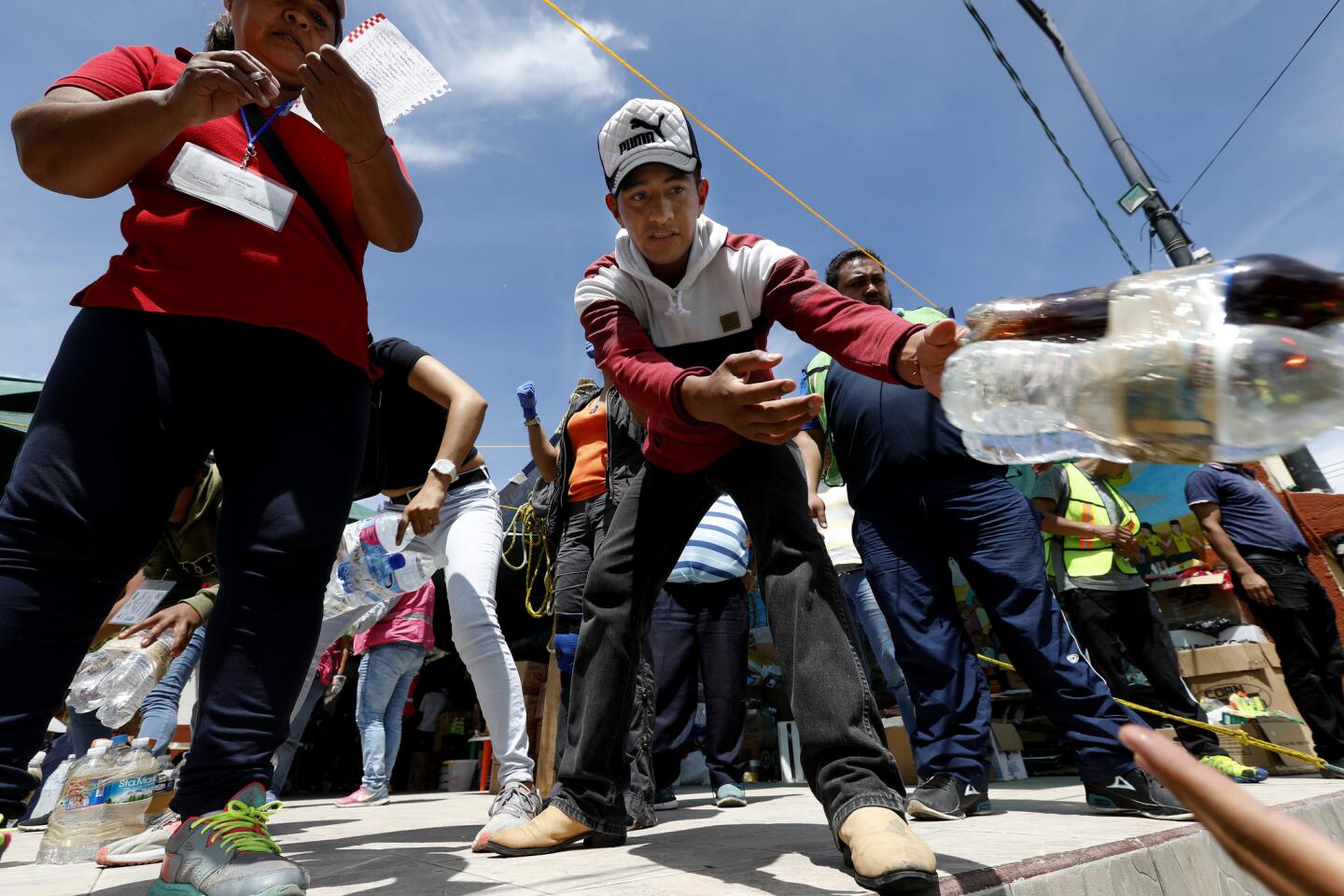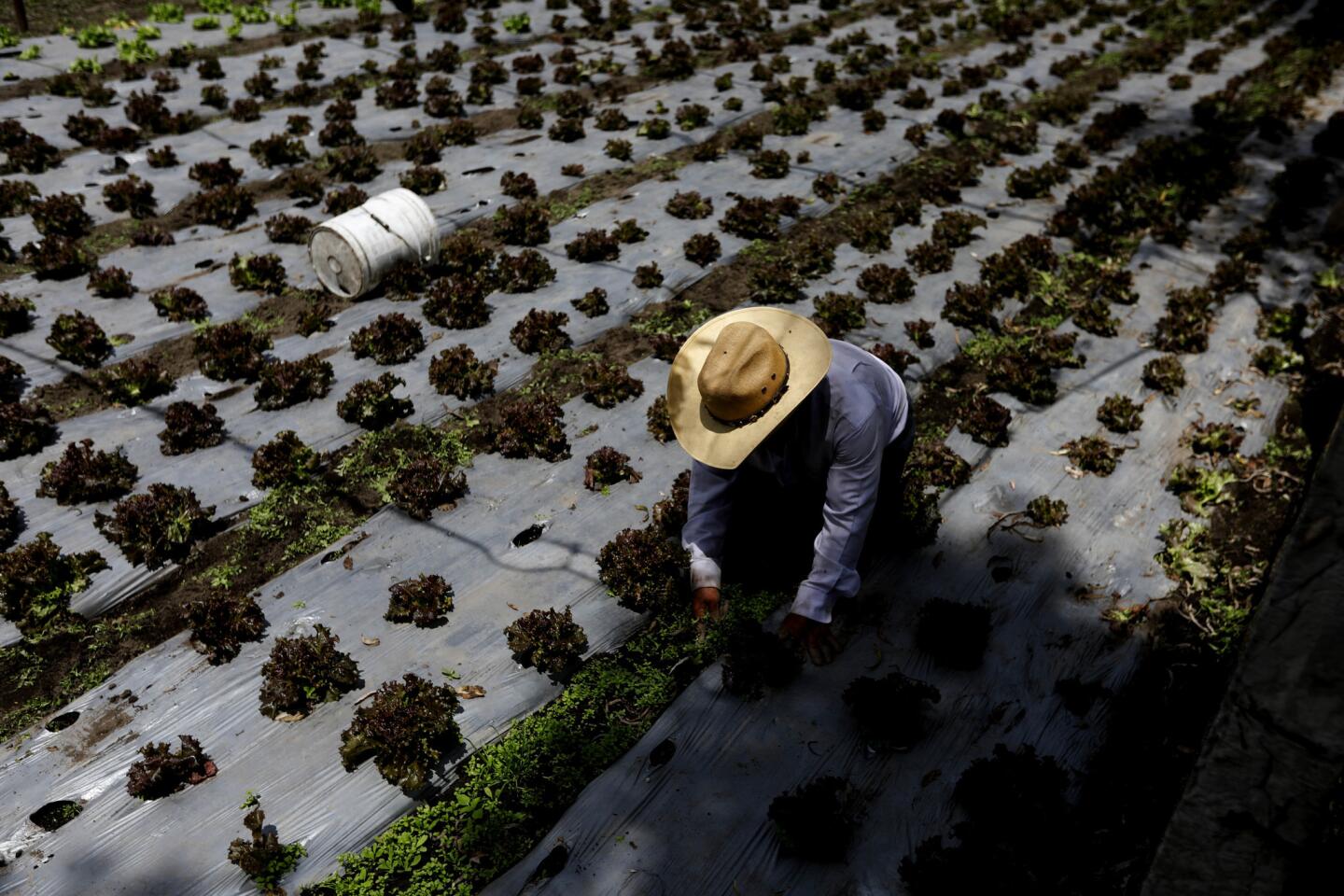When an earthquake struck this rural corner of Mexico City, the flimsy shacks collapsed in moments. Rebuilding, unfortunately, won’t take long
- Share via
Reporting from Mexico City — Paul Cordero Eugenio works the streets of his remote Mexico City barrio selling the tamales his mother makes from vegetables grown in the chinampas, or floating gardens, for which the municipality of Xochimilco is best known.
The ancient home of the Xochimilcas draws tourists to its canals full of colorful boats, vendors in gondolas hawking houseplants and waterborne mariachis belting out tunes.
But beyond the popular boat launches is a vast series of waterways, open fields and fertile islands that doesn’t square with most people’s perceptions of the metropolis of 20 million. It is in this poorer part of Xochimilco that 26-year-old Eugenio and his mother buy locally grown amaranth leaves, guava, kale, corn and mushrooms and fold them into the tamales, making enough money to survive.
It was never enough to build more that a simple, three-room, brick structure that nine people called home.
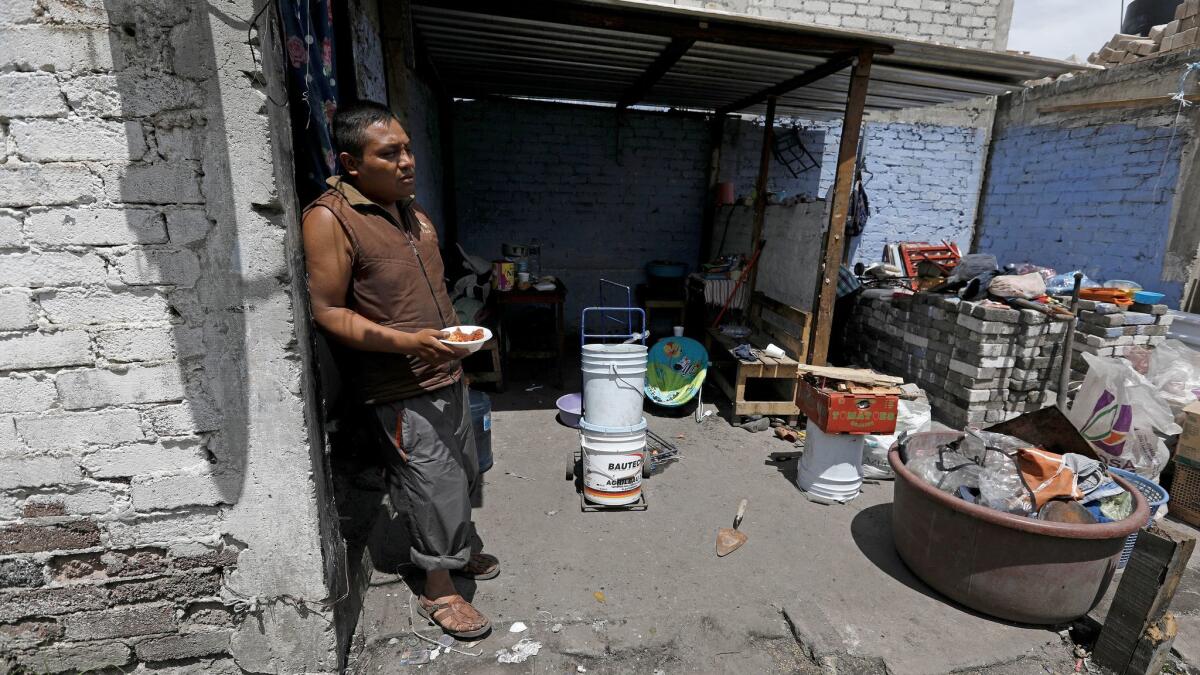
When Tuesday’s powerful earthquake hit, Eugenio watched two of the rooms crumble. His pregnant wife, out walking by a supermarket that collapsed, suffered a panic attack when a woman trapped in the rubble screamed at her for help.
“It makes us cry watching our home torn apart,” Eugenio said.
Amid the chaos the tamales went unsold and had to be thrown away. The family no longer had a kitchen to cook new ones.
Still, Eugenio was keeping things in perspective. He had escaped the earthquake with just a few scratches and doctors said the baby was OK.
“Major injuries?” he said. “No. Why lie?”
On Friday, his father was already organizing the bricks that had fallen in order to reuse them. The family of nine was sleeping in the one room that didn’t collapse.
“This is a poor area, but what we have in this neighborhood is that we help our families,” Eugenio said. “Our neighbors came and helped with our house,” putting up sheet-metal roofing to protect the family’s belongings.
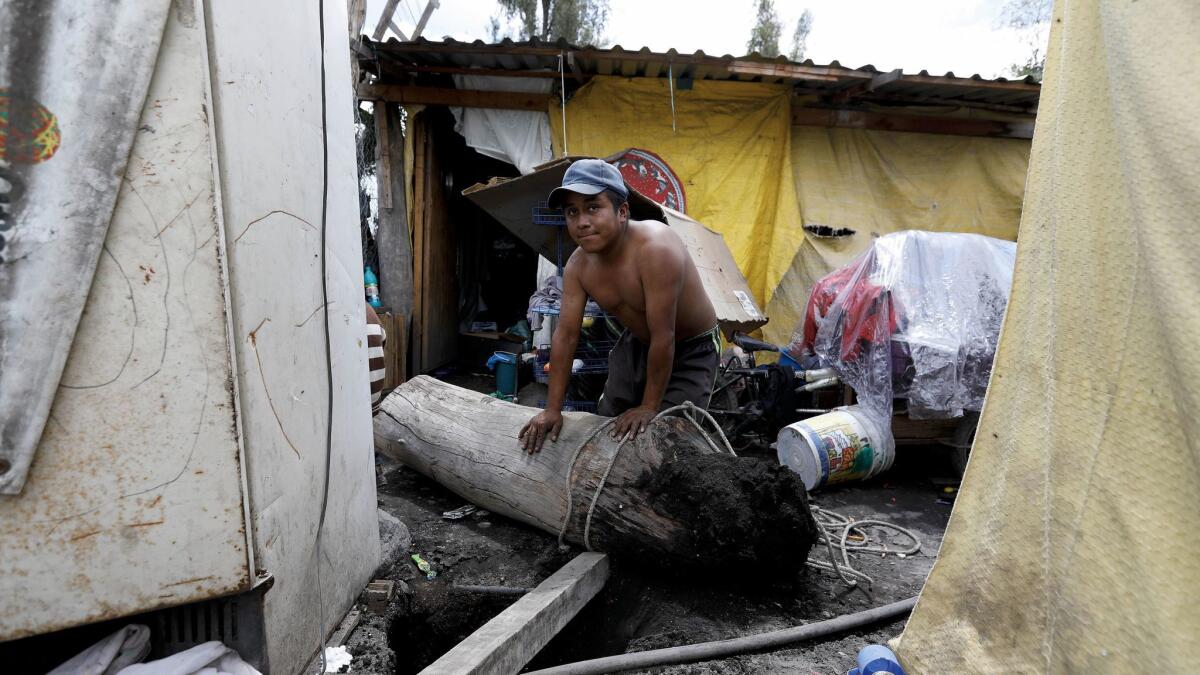
Eugenio’s neighborhood, La Conchita, is a labyrinth of alleys leading to verdant fields where horses graze, squash blossoms climb fences and wildflowers find every opportunity to bloom. Lettuce, kale, corn and succulents are grown here, along with many of the plants that show up on rooftops and in apartments around the city.
On Friday, neighbors said the provisions of nonperishable goods and water delivered to homes in Xochimilco had not reached them. A volunteer explained to residents waiting for relief supplies that deliveries hadn’t been made in part because those unfamiliar with the area were concerned they might be robbed if they ventured down the narrow alleys.
Better for locals to organize themselves, the volunteer said: “You know your community, you know what you need.”
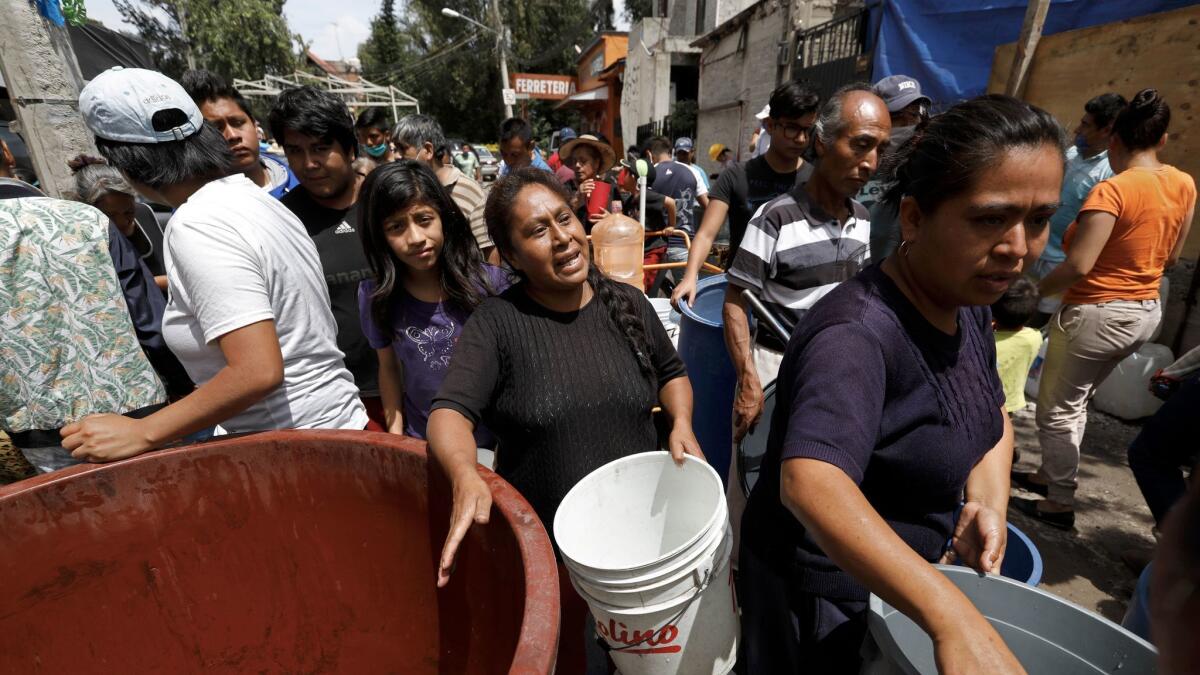
The area had yet to receive water since the quake, and only on Friday had a truck circled through to fill trash cans, buckets and barrels, which residents pushed more than half a mile through paths only accessible by foot, bike or motorcycle.
Dozens of neighbors formed a line in one of the alleys as they waited for the first delivery of food, soap, shampoo, toilet paper, diapers and other necessities. They playfully debated which end was the front and which was the back.
“We’re civilized! We’re not Neanderthals,” said Martin Palma, a representative for La Conchita.
“Don’t mess with us, Martin!” a neighbor shot back, laughing.
Suddenly there were shouts to clear the alley to make way for a health worker clutching a 1-month-old in danger of death from dehydration.
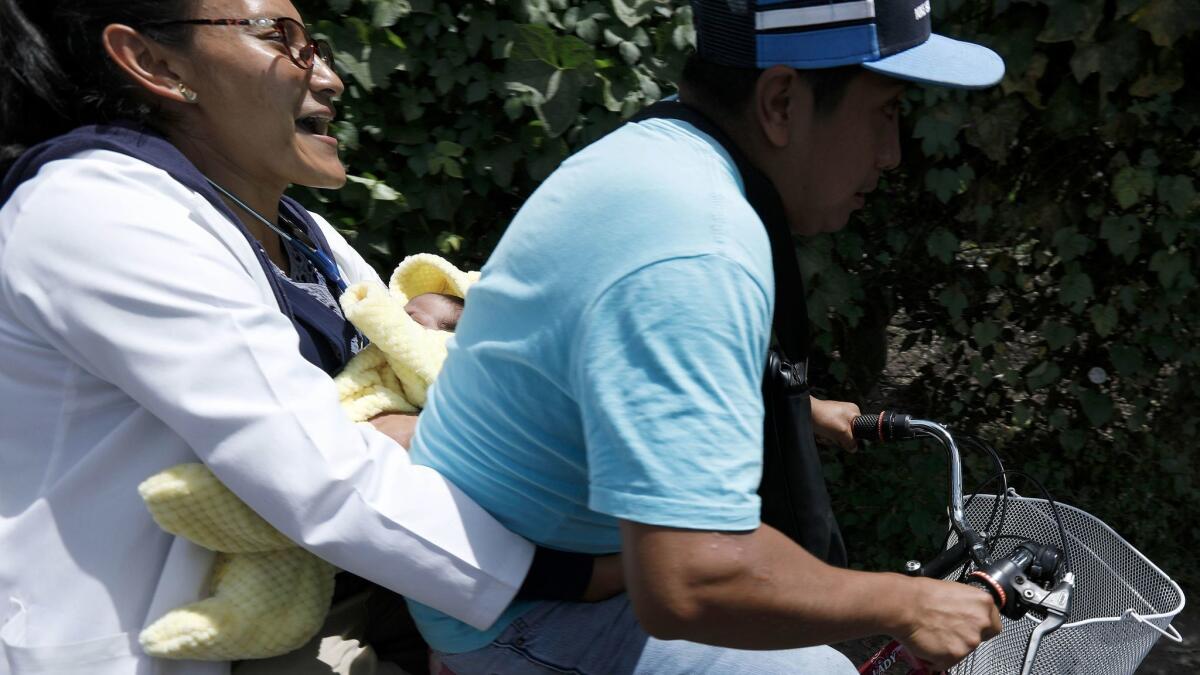
It wasn’t long before the first items arrived, and residents walked away hauling canned goods and toiletries.
Jose Jeronimo Perfecto, who sells candy in the street, had managed to salvage parts of a room in his home, which was made from tree trunks, beams of wood and sheet metal. It had toppled Tuesday, but he and his wife agreed they were grateful for the food and clothing that somebody had left in pile in a field next to his house.
“They’ve helped us, we aren’t complaining about the provisions, “ he said. But what he wanted next was wood and other building supplies to start repairing the room.
Juan Rojas, an organic tomato farmer, said he’d lived in the San Gregorio section of Xochimilco all of his 32 years.
He wasn’t surprised to see that the official rescue effort was slow to reach his area. The central parts of the city would always receive priority.
“Because we’re in a lower economic position and they’re in a higher position, the help always goes to them,” he said.
Not that he thought that was fair. “We feel frustrated because we’ve never suffered an impact like this before,” he said.
For Eugenio, it seemed pointless to get angry.
“Who are you going to blame?” he said. “In the end, you realize it’s no one’s fault.”
ALSO
On the Ground: In Mexico City, a sense of urgency and disquiet
For two and a half days, a saga of hope, grief and frustration at a toppled school in Mexico City
Mexicans aren’t counting on the government to rescue them. They’re saving themselves
More to Read
Sign up for Essential California
The most important California stories and recommendations in your inbox every morning.
You may occasionally receive promotional content from the Los Angeles Times.
